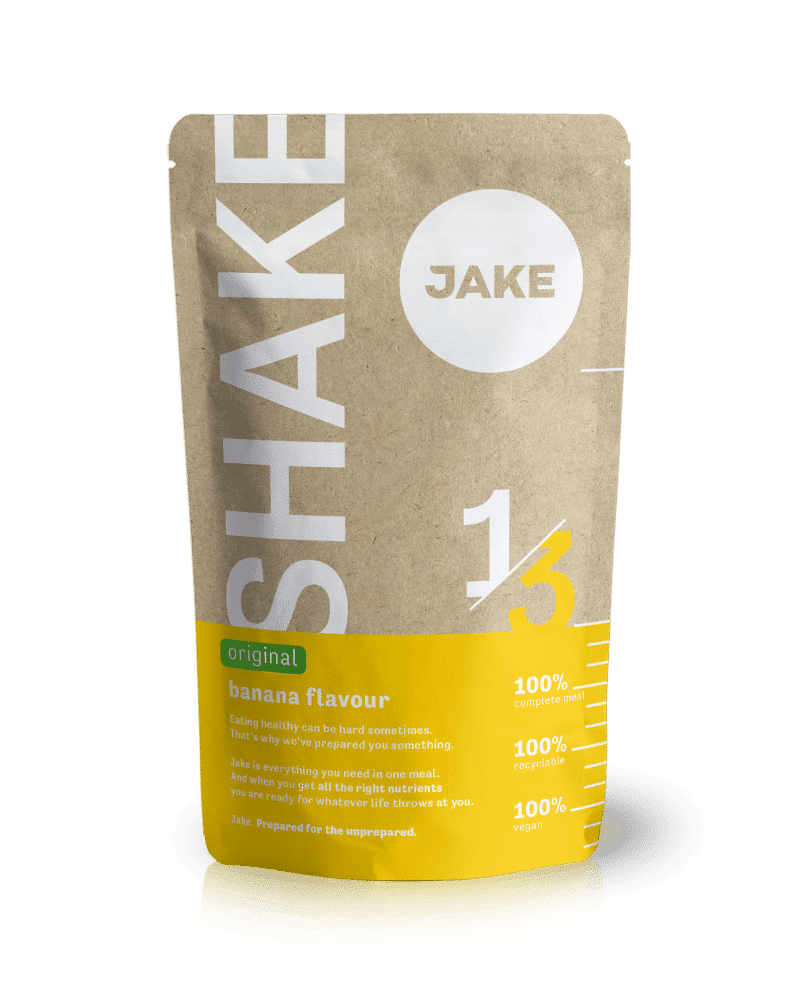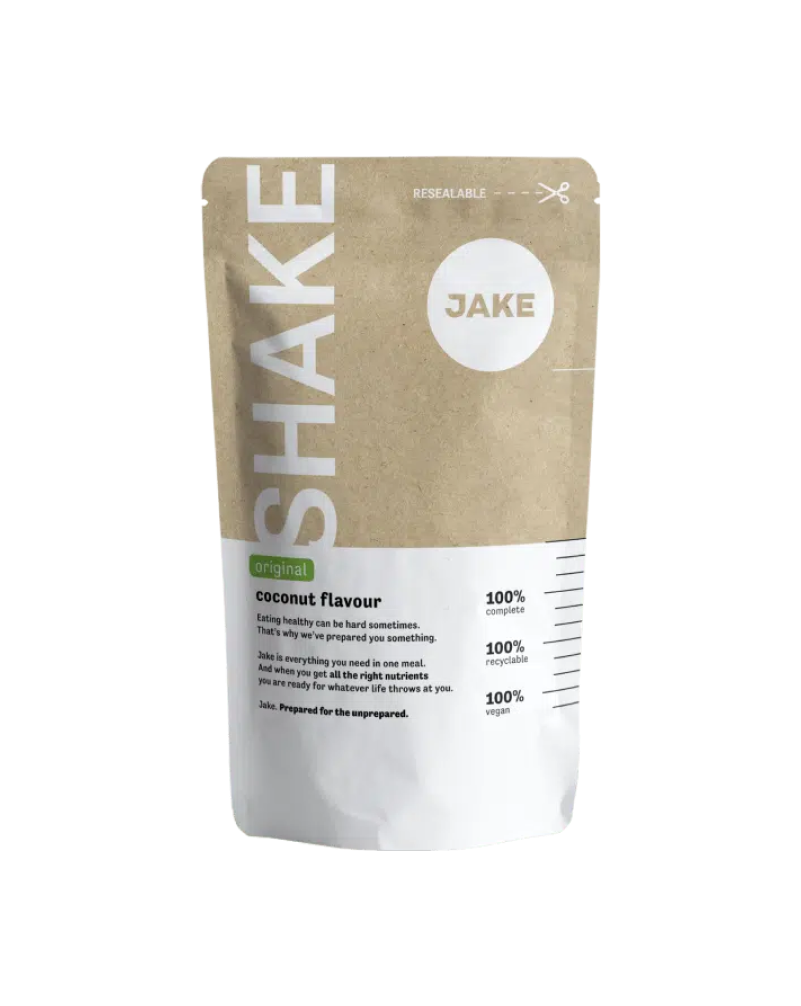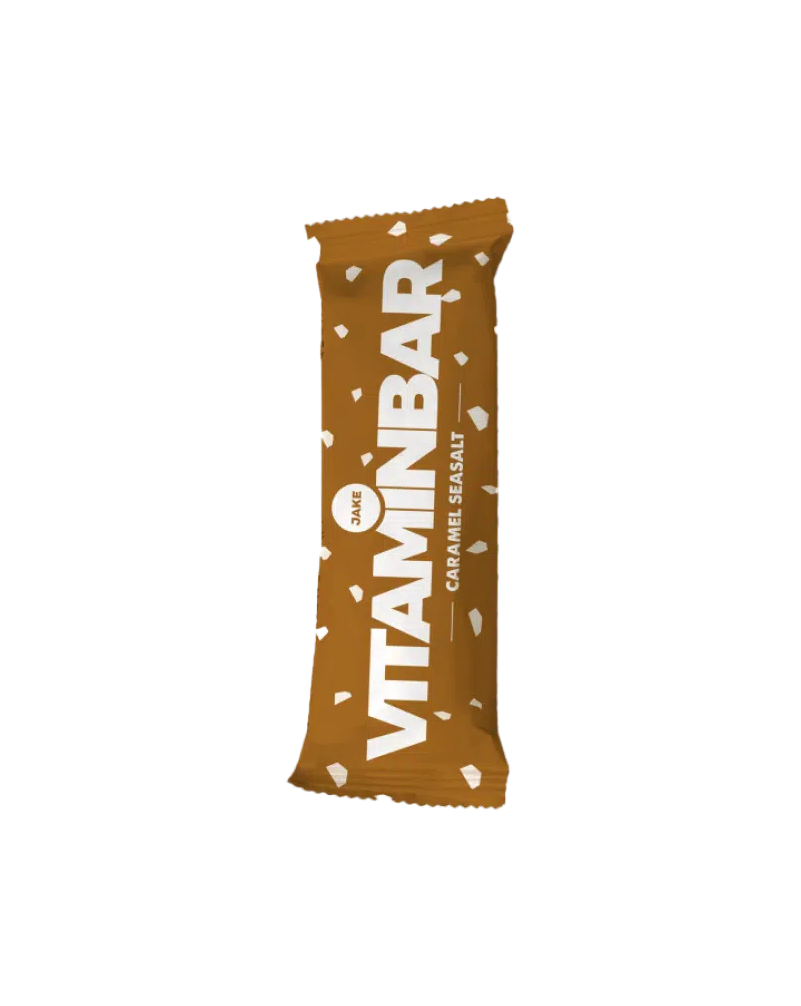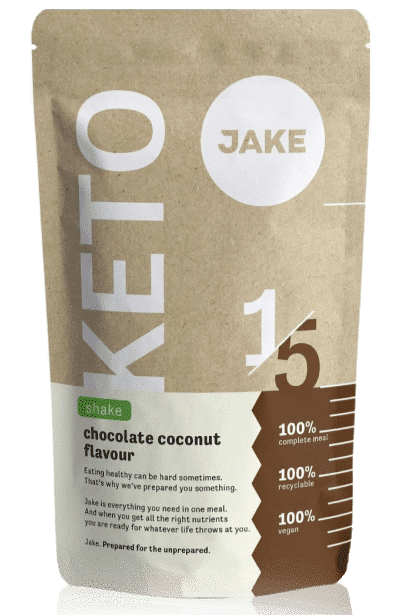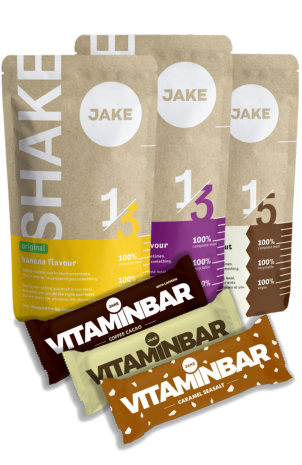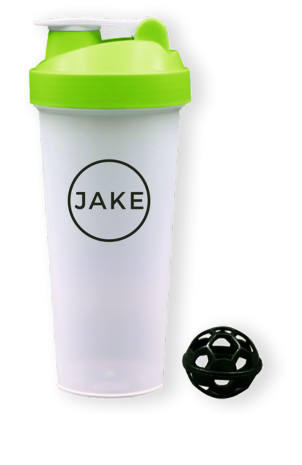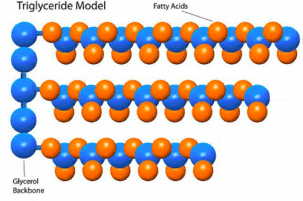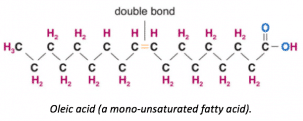14-minute read•November 8th, 2018
Fats have long been nutritional scapegoats, taking the blame for everything from a heart attack to a few extra pounds. But ‘fats’ is a broad term and there’s more to it than you probably think. Let’s talk about fats.

Short on time?
Best known for: Good for cholesterol levels;
Good sources: For saturated fats: red meats, dairy, butter and eggs. For omega-3 and omega-6 fats: fatty fish, vegetable oils, nuts, seeds and leafy green vegetables.
Recommended dietary allowance (RDA): Between 20-35% of your total energy intake. No tolerable upper intake level (UL) is established.
Good to know: The type of fats you eat is at least as important as the amount of fats you eat. You should avoid saturated and trans fats as much as possible. Instead, focus on polyunsaturated fats, such as omega 3 and omega 6.
Carbohydrates in Jake:
Jake Light: 22g/meal
Jake Original: 22g/meal
Jake Sports: 28g/meal
Vitaminbars: 12-13g/bar
What are dietary fats?
The term ‘dietary fats’ incorporates a set of substances that can differ in structure and function. We distinguish three types of dietary fat. These are triglyceridesTriglycerides are also called triacylglycerols. These are two different names for the same thing., phosphatidylcholine and cholesterol.
About 95% of our total fat consumption is made up of triglycerides. Phosphatidylcholine and cholesterol are quite different from them. We’ll discuss these two misfits first, and then focus on the main type of dietary fat (i.e. the triglycerides) in the rest of the article.
I. Phosphatidylcholine and cholesterol
Phosphatidylcholine and cholesterol are important dietary fats.
Phosphatidylcholine is a phospholipid.Phospholipids are a type of dietary fat that consists of two fatty acids and a phosphate group. Phosphatidylcholine is used to make the neurotransmitter acetylcholine, which is important for muscle activation. Your body makes all the phosphatidylcholine it needs, so you don’t have to obtain it from food.
Cholesterol belongs to the group of sterols. Its structure is very different from triglycerides and phosphatidylcholine, because it doesn’t contain any fatty acids. Getting cholesterol from food isn’t necessary, as our body produces cholesterol itself. Cholesterol serves as a major component of cell membranes and a precursor for many steroid hormones. For this article, it’s sufficient to say that although it’s often perceived as the bad guy, cholesterol is required for the normal functioning of your body.
II. Triglycerides
Now let’s turn to the fat that we normally think of when we talk about fats in food: the triglycerides. The structure of a triglyceride consists of three fatty acids connected to a glycerol backbone. Here’s what that looks like:
The glycerol backbone is always practically the same in these triglycerides. Each fatty acid is a chain of carbon and hydrogen atoms linked together. The three fatty acids linked to the glycerol backbone can differ in length and also in ‘saturation’.
Based on the number of carbon atoms in the chain, fatty acids can be classified as short-chain (2-6 carbon atoms), medium-chain (7-12 carbon atoms), long-chain (13-21 carbon atoms) and very-long-chain (22+ carbon atoms). The longer the carbon chain, the higher the melting temperature of the fatty acid. For example, butter and coconut oil are mostly made up of medium-chain fatty acids. That’s why they stay solid at room temperature but start melting when you warm them up in your hand for a few seconds.
The ‘saturation’ of fatty acids refers to whether or not a fatty acid chain is filled, or ‘saturated’, to its full capacity with hydrogen atoms. If there’s still ‘room’ for additional hydrogen atoms to join the chain, the chain is not yet ‘saturated’. Hence the term unsaturated fat. Based on degree of saturation, there are three types of fatty acids:
- Saturated fatty acids (often simply referred to as ‘saturated fat’): In a saturated fatty acid, every carbon atom is attached to a hydrogen atom. That also means that all carbon atoms in a saturated fatty acid are linked with single bonds. This is how that looks:
- Mono-unsaturated fatty acids (also referred to as ‘mono-unsaturated fat’): In a mono-unsaturated fatty acid, one of the bonds between carbon atoms is double. That’s where there’s room for another hydrogen atom. Here’s what the resulting fatty acid looks like:
- Poly-unsaturated fatty acids (also referred to as ‘poly-unsaturated fat’): When two or more double bonds are present in the carbon chain of a fatty acid, it’s referred to as poly-unsaturated. Here’s an example:

The best-known groups of poly-unsaturated fatty acids are omega 3 and omega 6.
Essential and non-essential dietary fats
While there are numerous fats, there are only two fatty acids that your body can’t make itself. That means that we need to get them from our food (i.e. they’re ‘essential’). The two essential fatty acids are linoleic acid (LA) (an omega-6 poly-unsaturated fatty acid) and alpha-linolenic acid (ALA) (an omega-3 poly-unsaturated fatty acid).
Dietary fats take longer to digest than other foods. The reason fats are such a challenge to your digestive system is that they aren’t water-soluble, whereas most of your stomach’s content is water-based. Among all dietary fats, only medium-chain triglycerides (MCT) are quick to digest, as they bypass your lymphatic system.
Functions of fats in your body
Fats are a major energy source for your body. And a very efficient one as well. Fats can be stored in practically unlimited amounts and each gram of fat yields 9 calories – over twice the energy your body gets from proteins or carbs, which both yield 4 calories per gram.
Despite the efficiency of fats as an energy source, glucose is the default fuel for your cells. Normally, when you consume carbs, they’re turned into glucose and immediately used for energy. The glucose that isn’t utilised for energy will be stored in your liver and muscles as glycogen. Glycogen can easily be converted back to glucose whenever your body needs fuel. However, the storage space for glycogen in your body is limited. That’s where fats come in. When you run out of glycogen storage space, your body turns excess glucose into fat for storage.
Unlike carbs and protein, fats cannot be converted into glucose. Instead, fats are turned into an alternative source of energy: ketones. Ketones are produced whenever there isn’t enough glucose or glycogen readily available to serve as fuel. That can happen overnight or during dieting and fasting. If the ketone concentration in your blood exceeds 0.5 mM, you enter a state of ketosis. During ketosis, ketones take over from glucose as your primary source of energy. Ketosis is the basis of the so-called ‘ketogenic’ diet, because you’re quite likely to lose weight when your body is burning fat to make ketones.
In addition to providing energy, fats have several other important functions in your body, including:
- Omega-3 and omega-6 fatty acids regulate blood cholesterol levels.
- Insulation: Vital organs such as the heart, kidneys and liver are protected by a layer of fat, called visceral fat. A similar fat layer under your skin protects your body from extreme temperatures and serves as padding on areas such as your hands and buttocks, which often come in contact with hard surfaces. The layer of fat under your skin is called subcutaneous fat.
- Helping digestion: Fats are needed for the digestion of other nutrients, most notably fat-soluble vitamins (A, D, E and K).
How much fat do you need?
How much dietary fat you need depends on factors such as your level of physical activity and your overall dietary composition. It’s generally recommended that 20 – 35% of your total energy intake should come from dietary fats. For example, if you’re consuming 2500 calories per day, 500-875 calories of those should come from fats. Each gram of fat provides you with 9 calories of energy, so this means that you need 55-97g fat per day.
However, when it comes to dietary fats, not only the total amount is important. What types of fats are included in your overall fat intake is at least as important. Which types of dietary fats should you go for and which should you avoid?
Omega-3 and omega-6 poly-unsaturated fatty acids: It’s recommended that 4% of total energy intake should come from the essential linoleic acid (LA) and 0.5% of total energy intake should come from alpha-linolenic acid (ALA).
Trans fatty acids: Trans fatty acids are a type of unsaturated fat that’s only found in small amounts in nature – usually in meat and dairy products. The majority of trans fatty acids you encounter in foods are a result of a process called hydrogenation, which is used in the food industry. Trans fatty acids aren’t required in the diet.
| Type of dietary fat | % of total energy intake to aim for |
|---|---|
| Saturated fatty acids: | <10% |
| Linoleic acid (LA) | >4% |
| Alpha-linolenic acid (ALA) | >0.5% |
| DHA + EPA | >250mg/day |
| Trans fatty acids: | 0% |
Fats in food
Some foods, like most fruits and vegetables, contain almost no fat. Other foods, like nuts, oils, butter and red meat, are rich sources of fat. By now you’re probably anticipating this, so here it goes: different foods contain different types of dietary fats.
Saturated fats are mostly found in animal products such as red meat, poultry, dairy products, butter and eggs. Palm and coconut oils are also sources of saturated fat.
Unsaturated fats are mostly found in vegetables, vegetable oils, nuts and fatty fish. Of the omega-3 polyunsaturated fats, you’ll come across EPA and DHA exclusively in fish. Alpha-linolenic acid (ALA) is mostly in plant sources like flaxseed, vegetable oils and nuts. The omega-6 polyunsaturated fats are found in leafy green vegetables, seeds, nuts, and vegetable oils.
Trans fats are naturally found in meat and dairy products. Apart from that, they’re still added to food by manufacturers in many EU countries. You’ll find them in deep-fried foods like French fries, but also cakes, microwave popcorn or frozen pizza.
The best sources of unsaturated fats are:
| Food | Grams of alpha-linolenic acid, ALA (per serving) | Grams of linoleic acid, LA (per serving) | Grams of DHA (per serving) | Grams of EPA (per serving) |
|---|---|---|---|---|
| Flaxseed oil (1 tbsp) | 7.26 | 1.72 | – | – |
| Salmon, cooked (85 g) | – | 0.57 | 1.24 | 0.59 |
| Herring, cooked (85 g) | – | 0.14 | 0.94 | 0.77 |
| Avocado (one, whole) | 0.22 | 3.37 | – | – |
| Pecans (100 g) | – | 20 | – | – |
Some of the foods with high content of saturated fat are:
| Food | Grams of saturated fat (per serving) | Energy from saturated fat (per serving) | % RDA* |
|---|---|---|---|
| Egg, scrambled (100 g) | 11 | 99 calories | 4% |
| Butter, salted (100 g) | 49 | 441 calories | 18% |
| Tuna, canned in oil (100 g) | 8 | 72 calories | 3% |
| Beef sirloin, roasted (100 g) | 9 | 81 calories | 3% |
| Cream cheese (100 g) | 28 | 252 calories | 10% |
* Based on a total energy intake of 2500 calories/day.
What if you’re not getting enough fats?
Not getting a sufficient amount of fat in your diet can affect you negatively in several ways.
If you’re not getting enough total fats (<20% of your total energy intake), you’re less able to absorb fat-soluble vitamins such as A, D, E and K. A shortage of dietary fats can, therefore, lead to vitamin deficiencies over time, even if your vitamin intake meets the RDAs.
In Europe, daily consumption of EPA and DHA ranges from 97 mg/day (39% of AI) in Ireland to 1.2 g (492% of AI) in Iceland, with a European average of 351 mg (140% of AI). Standardised for a total energy consumption of 2000 calories/day, the percentage of total energy intake that comes from ALA in Europe ranges from 0.1% (20% of AI) in Denmark to 1.1% (220% of AI) in the UK, with a European average of 0.5% (100% of AI). Intake of LA in Europe is lowest in Denmark (2.7% of total energy intake = 68% of AI) and highest in Spain (6.4% of total energy intake = 160% of AI).
When it comes to fats, how much is too much?
When you eat more dietary fats than your body needs for its normal functioning, the excess is stored as adipose tissueAdipose tissue is your body fat. Its main role is to store energy, but also cushion and insulate your body.. Your body’s capacity to store fat for future use is practically unlimited. However, if you accumulate too much body fat, you can become obese. Obesity is the number 1 preventable cause of death worldwide, with increasing rates among both adults and children. Obesity increases the likelihood of conditions such as cardiovascular disease, type 2 diabetes, obstructive sleep apnoeaObstructive sleep apnea is a serious sleep disorder. It’s characterised by interruptions of breathing during sleep, which limit the flow of oxygen to the brain and body. and depression.
This being said, how much dietary fat is too much depends on the overall composition of your diet. if you get more than the recommended 20-35% of your total energy from fats but you lower your carbs intake, your body can adjust to this dietary composition by switching to ketones instead of glucose as its primary energy source. This state is known as ketosis. Although ketosis is generally considered safe for most people, not a lot is known yet about its effects in the long term, due to insufficient research.
Whereas overall fat intake matters, the composition of your fat intake is just as important. And there are certain types of dietary fats you should avoid.
Saturated fatty acids and trans fatty acids are known to increase blood levels of LDL cholesterol, which can be a risk factor for cardiovascular diseases. No tolerable upper intake level (UL) is set for either of these fatty acids, as any amount of them increases blood concentrations of LDL cholesterol. Since most foods contain a combination of fatty acids, it would be close to impossible to completely exclude saturated and trans fatty acids from a regular diet. Limiting your intake as much as possible can help lower the risk of cardiovascular diseases. Replacing saturated fatty acids with poly-unsaturated fatty acids can also help decrease your LDL cholesterol concentration and increase HDL cholesterolHigh-density lipoprotein (HDL) cholesterol is also known as ‘good’ cholesterol. Its main role is to remove LDL cholesterol from your blood and into the liver, where it’s either excreted from the body or reused. concentration.
Take-aways
The key things to keep in mind about fats are:
- Fats aren’t only an energy source for your body.
- Two types of fatty acids are essential – linoleic acid (LA) and alpha-linolenic acid (ALA). They belong to the groups of omega-3 and omega-6 fatty acids.
- The best sources of omega-3 and omega-6 fatty acids are fatty fish, vegetable oils, nuts, seeds and leafy green vegetables.
- Trans fatty acids are found in processed foods like frozen pizza, microwave popcorn or French fries.
- It’s recommended that 20-35% of your total energy intake comes from fats.
Afraid to miss out on essential nutrients your body needs? You can always take our Jake meal replacement shakes or one of our delicious meal replacement bars.
